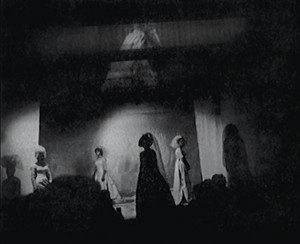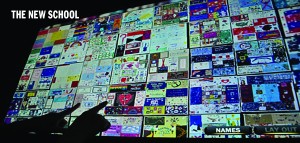Jill Godmilow, Independent Filmmaker – Staying Out of the Torture Room: The Post-Realist Documentary
Introduced by Media Studies Faculty Member Deirdre Boyle
The Speaker: Since 1966 Jill Godmilow has been producing and directing non-fiction and narrative films including the Academy Award nominated Antonia: A Portrait Of The Woman (1974); Far from Poland, (1984) the post-realist documentary feature about the rise of the Polish Solidarity movement; Waiting for the Moon(1987), a feminist/modernist fictional feature about the lives of the literary couple Alice B. Toklas and Gertrude Stein (1st prize, Sundance Film Festival); Roy Cohn/Jack Smith (1995), a cinematic translation of a theater piece by performance artist Ron Vawter; What Farocki Taught, a replica and interrogation of a short film by German filmmaker Harun Farocki about the production of Napalm B during the Vietnam war, and most recently, a 6 hour, DVD archive, Lear ’87 Archive (Condensed) about the work of the renown New York City theatrical collective, Mabou Mines, at work on a fully gender-reversed production of Shakespeare’s “King Lear”. Among others, she has received fellowships from the Guggenheim and Rockefeller foundations. In 2003, Antonia: A Portrait of The Woman was added to the prestigious National Film Registry at the Library of Congress.
Abstract: This talk will consider “Selma Last Year,” a largely forgotten multimedia installation that took place during the Winter of 1966 as part of the New York Film Festival’s fleeting interest in Expanded Cinema. A collaboration between the street theater producer Ken Dewey, Magnum photojournalist Bruce Davidson, and Minimalist composer Terry Riley, this groundbreaking media installation juxtaposed large scale projected images, an immersive audio collage, small scale photographic prints, 16mm documentary film, and a delayed video feedback loop to create a series of intentionally disjunctive environments.
“Epidemics, like wars, mark a generation for life.”
The AIDS Memorial Quilt was created 27 years ago as a work of community activism to protest the appalling lack of attention by the US health agencies to an increase in improbable fatalities among gay men in the United States. Its first inception unfolded in October 1987 on the National Mall in Washington DC as part of the March for Gay Rights; it included 1,920 Quilt panels. In 2014, the Quilt now encompasses more than 48,000 panels, representing 60 countries and commemorating more than 93,000 names. It is the largest living memorial of its kind in the world.

